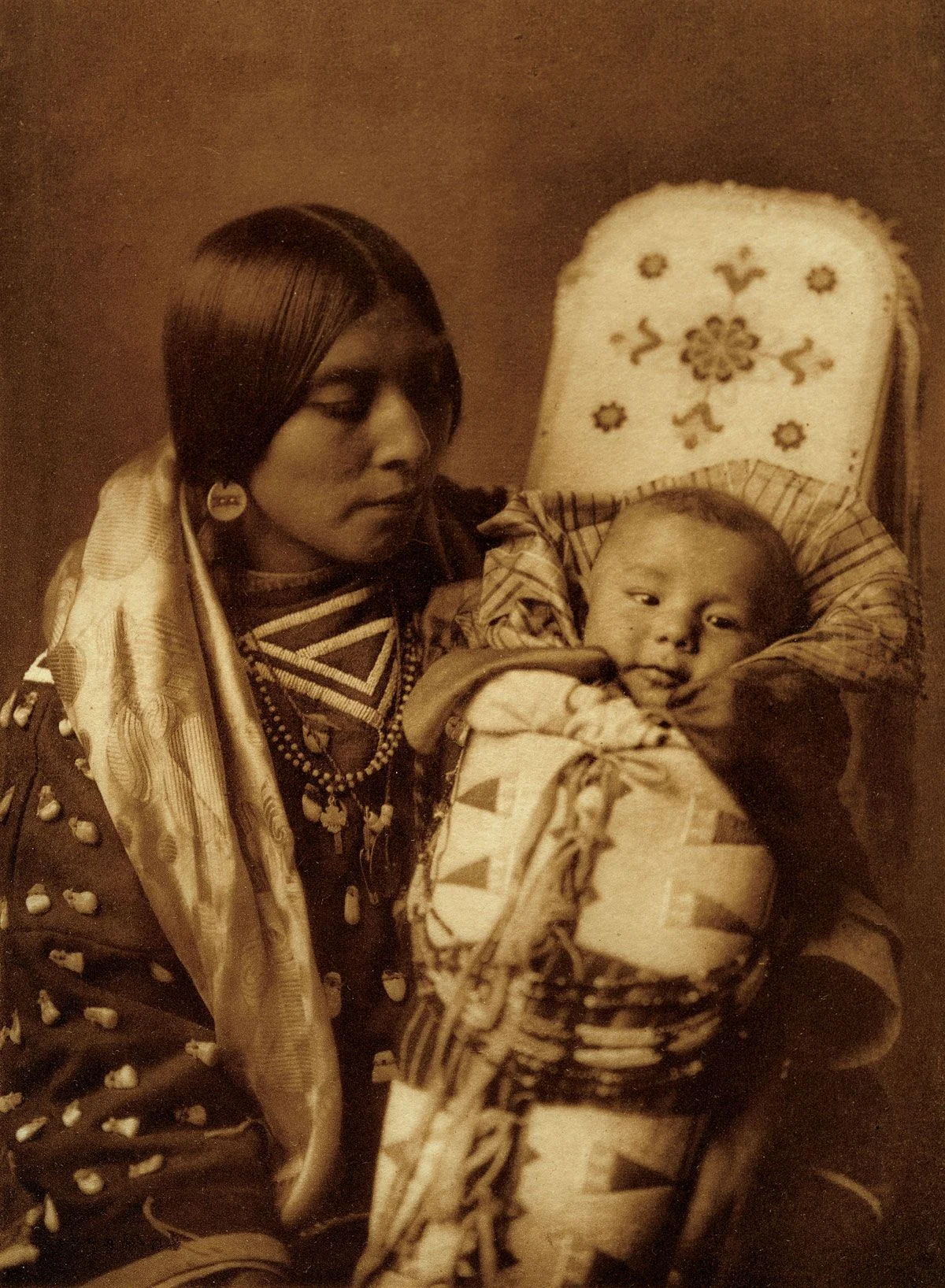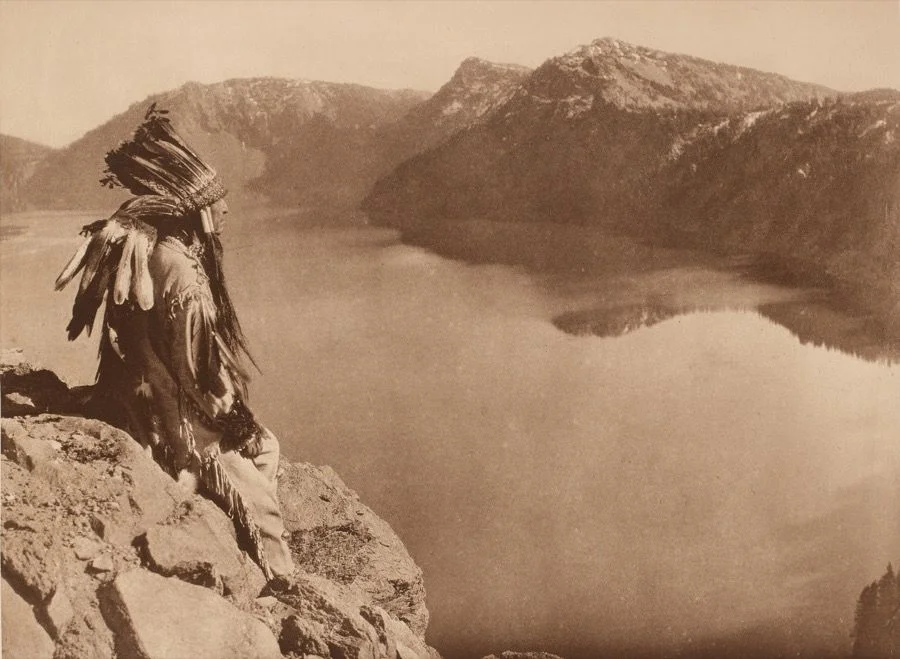Edward Sheriff Curtis • American 1868-1952
Oasis in the Badlands (Red Hawk, Oglala Sioux) • Orotone Photograph on Paper 10-1/2” x 13-1/2”
The Sun Dance of the Plains Indians was so powerful, it ended up costing Edward Curtis his business, fortune, family and mental health. When he agreed to accompany George Bird Grinnell, editor of Field and Stream Magazine, Curtis thought he was going on the kind of outdoor adventure he had enjoyed as a child when paddling a canoe through the Minnesota wilds with his father, an itinerant preacher. Now, as he sat beside Grinnell looking over the massive Indian gathering, Curtis was witnessing a sacred 4-day Indian celebration few white men had
ever seen.
Upon returning to his Seattle home, Curtis began planning a massive, 5 year project to record the traditional life of American Indians, before it disappeared. J. Pierpont Morgan provided the original financing, pledging $75,000 over the 5 years to cover expenses. The grant did not provide any income to Curtis who was about to embark on a project described by the New York Herald as “the most ambitious enterprise in publishing since production of the King James Bible.”
His mission was to create “the most beautiful set of books ever published,” according to J.P. Morgan. The North American Indian was to be 1,500 images bound into 20 volumes of books, printed on the finest paper and sold for over $2,500 per set (a huge sum in the early
20th century).
(story continues below break)























